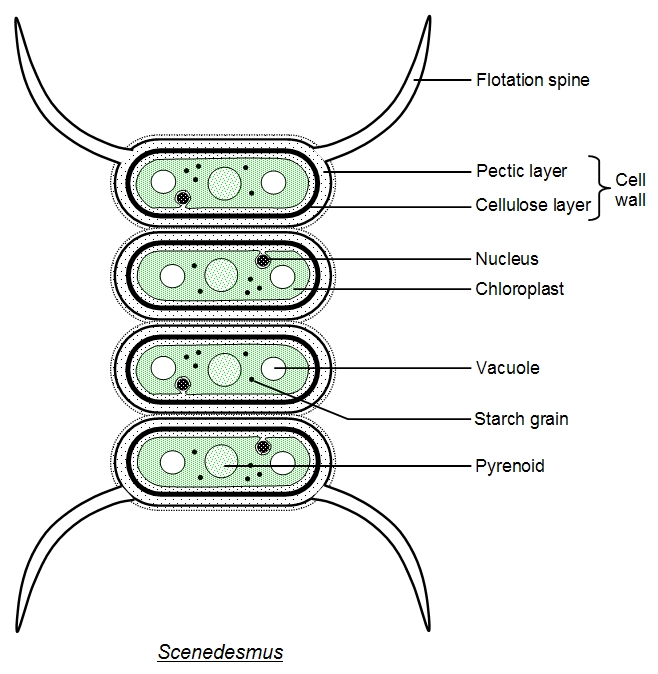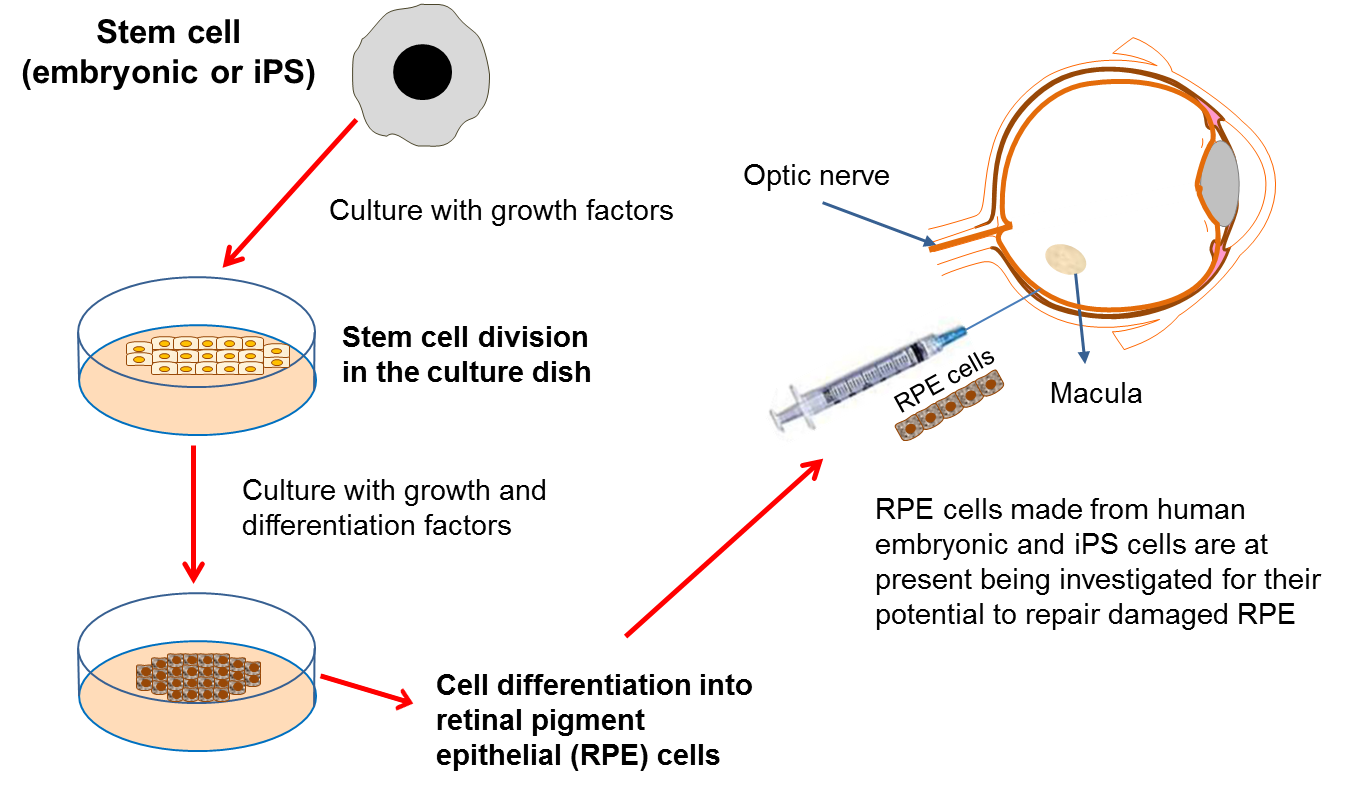Question
Scenedesmus is a microscopic, unicellular green alga. However, it often exists as multicellular colonies of cells.

The magnification of the image is 500×. What is the length of one cell?
A. 10nm
B. 50 μm
C. 20 μm
D. 10mm
▶️Answer/Explanation
Ans:C

Scenedesmus is a small, nonmotile, colonial green alga consisting of cells aligned in a flat plate. The colonies most often have two or four cells, but may have 8, 16, or rarely 32 and are occasionally unicellular and smaller in length of average 11micrometers to 20 micrometers. They may appear multicellular just because colonial in nature, the main difference in between a multicellular organism and a colonial organism is that the individual organisms that form a colonies are if separated can survive on their own while cells from a multicellular organism can notb survive.
Question
The images of the radiolarian, a single-celled marine organism,were produced using a light microscope (left) and a scanning electron microscope (right).
What is a reason for the difference in quality of these images?
A. Light cannot pass through the specimen.
B. Higher magnification can be achieved with the electron microscope.
C. The resolution of the electron microscope is higher.
D. Samples are stained with methylene blue when viewed with the light microscope.
▶️Answer/Explanation
Ans: C
The resolution of a microscope is the ability to distinguish two points that are close together. The scanning electron microscope (SEM) has a higher resolution compared to the light microscope. This is because the SEM uses electrons instead of light to image the specimen. Electrons have a shorter wavelength compared to light, so they can distinguish smaller structures in the specimen. As a result, the SEM image has a higher level of detail and clarity compared to the light microscope image.
Which characteristic of stem cells makes them useful for treating Stargardt’s disease?
A. They can differentiate into retinal cells.
B. They are readily available from especially created embryos.
C. They transport white blood cells to the eyes.
D. They divide by binary fission so provide sufficient cells.
▶️Answer/Explanation
Markscheme
A

The characteristic of stem cells that makes them useful for treating Stargardt’s disease is their ability to differentiate into retinal cells. Stargardt’s disease is a genetic disorder that affects the retina and causes vision loss. Stem cells have the potential to differentiate into various cell types, including retinal cells, which can be transplanted into the affected eye to replace damaged or lost cells. This can potentially restore vision in individuals with Stargardt’s disease. Stem cells can be derived from various sources, including embryonic stem cells, induced pluripotent stem cells, and adult stem cells.